READY TO GET STARTED?
REQUEST A FREE ESTIMATE
Fill out the form below or call (888) 466-7849 for a free, no-obligation estimate.
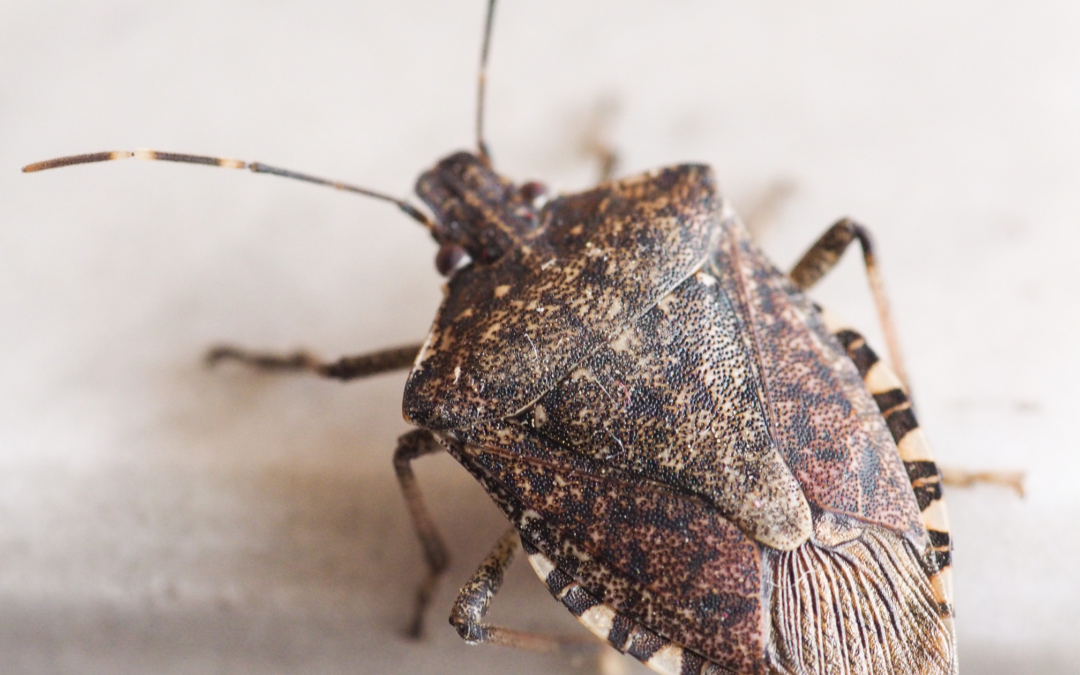

Have you ever seen those armor-shaped bugs on the walls in your home? If yes, then you have a stinkbug problem. These bugs are attracted to warmth and are in search of protected, overwintering sites where they can enter houses in large numbers. With the right preventative measures placed throughout your home, these pests can be put to a stop.
Stinkbugs are an invasive species that tend to release an odor when disturbed or crushed. These foreign pests are native to China, Japan, Korea, and Taiwan and were first identified in the States in the late 90’s. While these overwintering pests do not possess any real threat to humans, they can become a nuisance when an infestation occurs.
Stinkbugs are known to feed on a variety of host plants, including fruits (e.g., apples, peaches, figs, apricots, and persimmons), many ornamental plants, and weeds. While these pests don’t spread disease or cause structural damage, they are considered more of a nuisance to people if they make their way indoors. Stinkbugs prefer moist, mild climates and can be found in bathrooms and kitchens. Stinkbugs spend the spring and summer seasons outdoors then will seek shelter from the winter elements indoors.
During the winter months, stinkbugs go into a phase known as diapause, which is like hibernation, where the bugs go inactive during the chilly weather. When the stinkbugs find a spot to overwinter, they release a pheromone that attracts other stinkbugs to their location. While they typically stay dormant until spring, unusually warm spells during the winter can bring them out full force.
If you meet stinkbugs in your home, the best way to get rid of them is to vacuum them up and immediately dispose of the bag. When stinkbugs are threatened, disturbed, or squashed, they emit a smell that has been described as anything from cilantro to rotting almonds to spoiled fruit. The best way to prevent stinkbugs is to ensure that all cracks, crevices, gaps, or holes in your foundation are fixed. They can also enter through chimneys, air conditioning vents, or underneath house siding. Check these areas throughout your house to make sure there are no openings or gaps to help prevent them from entering.
If you suspect you have a problem with stinkbugs, contact a professional local pest control company who can help identify any entry points pests may be using and provide a treatment plan to eliminate them. They can also use a preventative spray in the late summer/early fall to help keep them out before the overwintering season sets in.
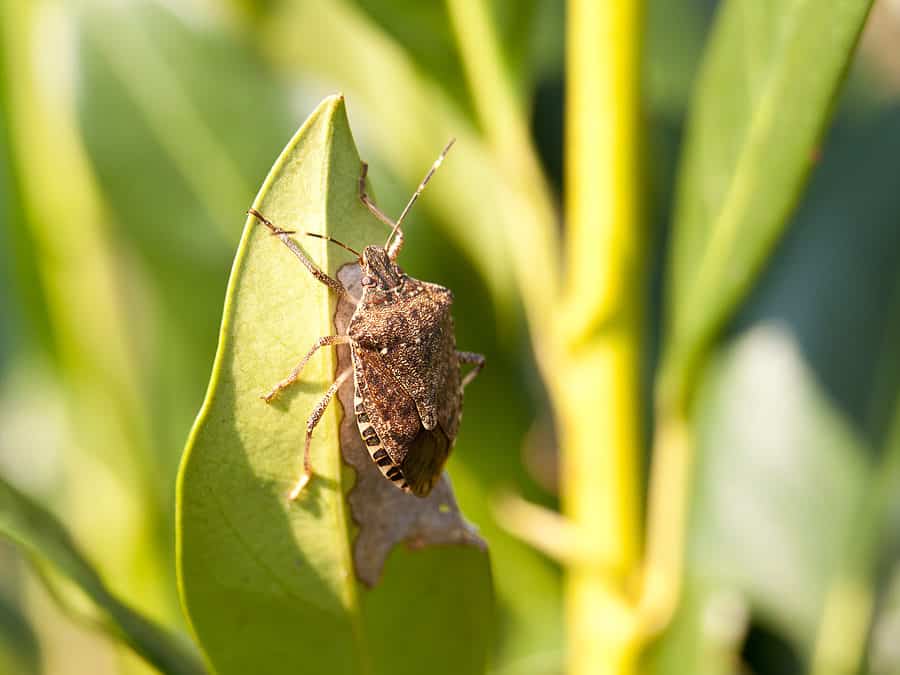
Overwintering is a common term used to describe pests and their activities that allow them to survive the colder temperatures. Overwintering pests will often seek comfort and shelter in homes and buildings because of their warmth. These pests can be especially sneaky and if you don’t take preventative measures as they can infest quickly. Here are some common overwintering pests and some easy do-it-yourself pest control tips to keep them outside of your house.
Stink Bugs
Stink bugs can infest homes in large numbers, especially during the fall. You can often find these bugs on the side of your home, where they can receive the most sunlight to keep warm. While these bugs aren’t harmful to humans, if crushed, they will emit an unpleasant odor.
Boxelder Bugs
One of the more aggressive species of overwintering pests, the boxelder bug has mouthparts are both piercing and capable of puncturing the skin if being handled. This can cause slight irritation and produce red spots, like mosquito bites. Crushing these bugs is not recommended, as their bodies will produce a strong odor and remains can leave a reddish stain on fabrics.
Lady Bugs
Ladybugs are considered harmless and deemed beneficial. They will often consume plant-eating insects such as aphids, mites, and scale insects, all of which can harm crops and plants in gardens; though if they invade your home, they can become a nuisance and can be difficult to get rid of.
Overwintering Pest Protection Tips
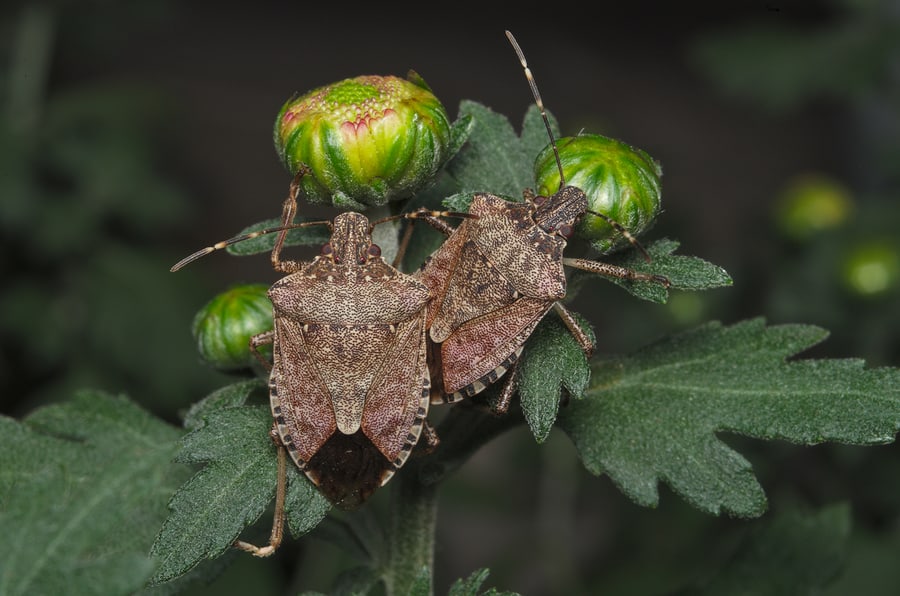
Noticing small, greenish-brown bugs congregating throughout the cracks of your home’s foundation or even inside your house? While many might identify these insects as stinkbugs, they might actually kudzu bugs! Kudzu bugs and brown marmorated stinkbugs are often confused with each other. While these pests do have some similarities, they are quite different from each other. Let’s breakdown how these insects are both alike and different!
How They’re Alike
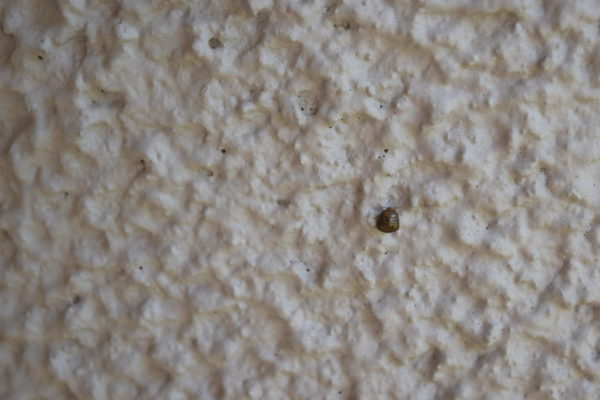
Kudzu Bug
Both stinkbugs and kudzu bugs are known to be a nuisance to all homeowners. Both are highly attracted to warmth and will enter homes to find a warm place to gather. When disturbed, both species will emit an alarming chemical defense against predators. When crushed, they release a very unpleasant odor from their bodies. Even worse, if several of these insects are crushed together, the smell left behind is extremely powerful.
How They’re Different
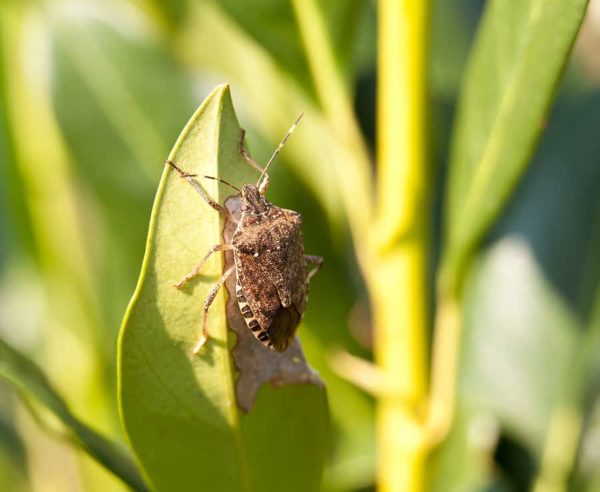
Stinkbug
A stinkbug’s shield-like body is around 1/2″ long and 1/2″ wide with shades of brown across its entire body. Their body size is a bit larger than a kudzu bug, with the kudzu’s measuring only 4 to 6 millimeters long. Kudzu bug bodies are olive green and brown, with a flat, squarish body shape.
Stinkbugs will typically feed off ornamental plants, fruit trees, legumes, and vegetables. The kudzu bug prefers to eat kudzu vines but will occasionally eat soybeans and most any other type of beans. While both stinkbugs and kudzu bugs utilize different types of food sources, both will destroy crops, making both species agricultural pests.
How to Prevent Them
If you notice either of these pests infesting your home, try some of these pest prevention tips below:
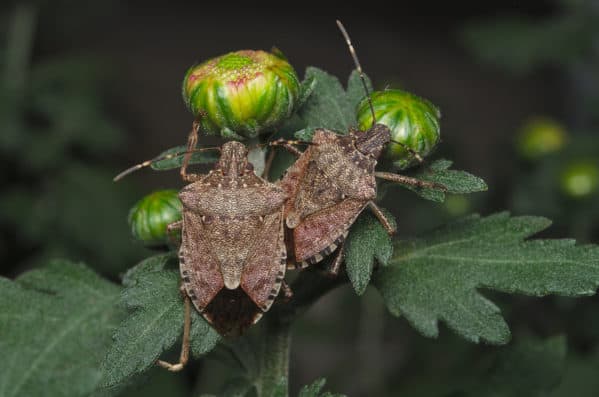
As the weather warms up overwintering pests will begin to wake up and make their way outdoors. One of these is the brown marmorated stinkbug. While these household pests don’t sting, bite, or carry any diseases, they can become a nuisance when they get inside your home. In fact, once you see stinkbugs inside, it’s usually too late to do anything to keep them out.
The brown marmorated stinkbug is native to Asia but was later introduced in the United States. They prefer moist, temperate climates like those of the Eastern US and the Pacific Northwest. Stinkbugs feed on soybeans, corn, fruit, vegetables, and ornamental plants that grow close to homes. Stinkbugs spend the spring and summer seasons outdoors then will seek shelter from the winter elements indoors – often entering your home through cracks, crevices, gaps or holes in your foundation, through chimneys, air conditioning vents, or underneath siding. The prefer homes with lots of trees around and will gravitate to the upper floors of a home.
During the winter months, stinkbugs go into a phase known as diapause, which is similar to hibernation, where the bugs go inactive during the cold weather. When the stinkbugs find a spot to overwinter, they release a pheromone that attracts other stinkbugs to their location. While they typically stay dormant until spring, unusually warm spells during the winter can bring them out full force.
If you encounter stinkbugs in your home, the best way to get rid of them is to vacuum them up and immediately dispose of the bag. When stinkbugs are threatened, disturbed, or squashed, they emit a smell that has been described as anything from cilantro to rotting almonds to spoiled fruit.
The best way to control stinkbugs is to prevent them from getting into your home in the first place. Here are 9 prevention tips for keeping stinkbugs out.
10 Common Myths About Pest Control
Is Orange Oil Effective As A Treatment For Termites?
How Do You Get Your Lawn Ready For Spring?